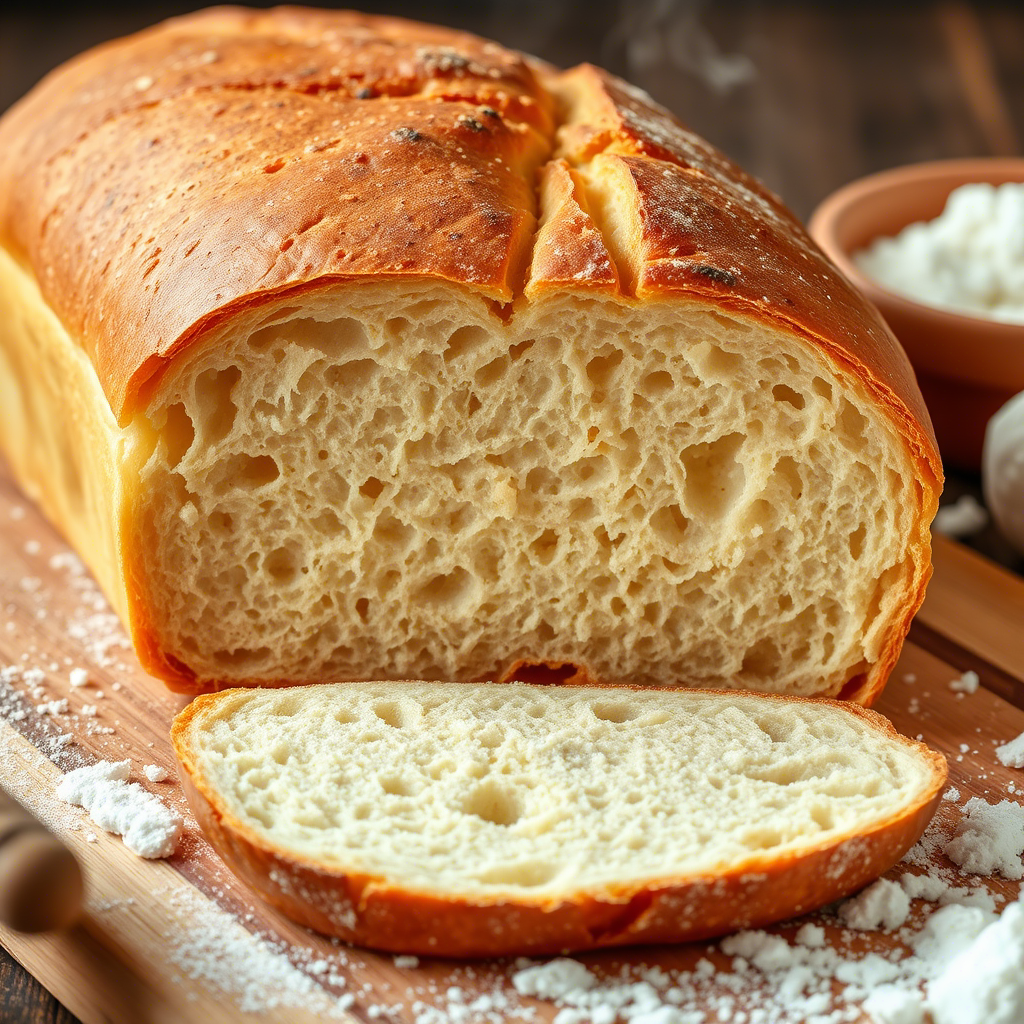Have you ever wondered why some loaves of bread have a golden, crispy crust that makes your mouth water, while others fall flat?
The art of baking the perfect crust is not just about following a recipe—it’s rooted in science. From temperature to humidity, fermentation to oven techniques, understanding the factors at play can transform your homemade bread into something truly extraordinary.
In this article, we’ll dive deep into the science behind perfect crusts, uncovering practical tips and fascinating insights along the way.
Understanding the Basics: What Makes a Great Crust?
A great crust isn’t just about aesthetics; it enhances the flavor, texture, and even shelf life of bread. At its core, a perfect crust results from starch gelatinization and caramelization during baking. When heat meets moisture inside the dough, starches absorb water and burst, creating a glossy sheen. Simultaneously, sugars on the surface caramelize, producing those irresistible golden-brown tones and rich flavors.
But achieving this balance requires precision. Too little moisture leads to dryness, while too much can make the crust soggy. So how do bakers strike the right chord? By controlling variables like hydration levels, proofing time, and oven conditions.
For instance, professional ovens often use steam injection to mimic the high-humidity environment needed for ideal crust formation. While home bakers may not have access to such equipment, there are simple tricks to replicate these effects.
Tip: To add steam at home, place a shallow pan of boiling water in the bottom of your oven before sliding in your loaf. This helps create the moist atmosphere necessary for a crackling crust.
Hydration Levels: The Key Ingredient
One critical factor influencing crust quality is the dough’s hydration level—the ratio of water to flour. Higher hydration doughs tend to produce more open crumb structures with thinner, crispier crusts.
On the other hand, lower hydration doughs yield denser textures and thicker crusts. Both approaches have their merits, but mastering hydration allows you to tailor your bread to suit personal preferences.
For example, baguettes thrive on high hydration because their delicate structure benefits from maximum expansion during baking. Meanwhile, rustic country loaves benefit from moderate hydration, ensuring they maintain structural integrity without sacrificing flavor or crunch. Adjusting hydration also impacts gluten development, which plays a crucial role in shaping the final product.
Experiment: Try making two batches of dough—one with 60% hydration and another with 75%. Observe how each behaves during kneading, rising, and baking. You might be surprised by the differences!
Fermentation: Where Flavor Meets Texture
Fermentation is the magical process where yeast consumes sugars in the dough, releasing carbon dioxide gas and alcohol.
Beyond leavening, fermentation contributes significantly to crust quality by enhancing flavor profiles and promoting better browning. Longer fermentations allow enzymes to break down complex carbohydrates into simpler sugars, which caramelize beautifully under heat.
Cold fermentation, in particular, has gained popularity among artisan bakers due to its ability to deepen flavors and improve crust characteristics. By slowing down yeast activity through refrigeration, cold fermentation extends the dough’s maturation period, resulting in richer aromas and darker crusts.
Pro Tip: If you’re short on time, try incorporating a small amount of pre-fermented starter (like poolish or biga) into your dough. These starters kickstart the fermentation process, giving your bread an extra boost of complexity.
Oven Techniques: Turning Up the Heat
Even the best-prepared dough won’t shine without proper oven management. Two essential elements here are temperature and convection.
High heat ensures rapid expansion of gases trapped within the dough, leading to impressive oven spring and a well-defined crust. Convection, meanwhile, circulates hot air evenly around the loaf, guaranteeing consistent browning.
Another technique worth exploring is scoring—making strategic cuts on the surface of the dough before baking. Scoring doesn’t just create attractive patterns; it relieves internal pressure as the bread expands, preventing irregular cracks and allowing the crust to develop uniformly.
Did You Know? Professional bakers sometimes “double bake” certain types of bread by lowering the oven temperature halfway through cooking. This method locks in initial crispiness while ensuring the interior cooks thoroughly.
Inspirational Stories: From Mistakes to Masterpieces
Every great baker started somewhere—and chances are, they made plenty of mistakes along the way. Take the story of Lionel Poilâne, the legendary French baker known for his signature miche loaf.
Early in his career, Lionel struggled to achieve the thick, crunchy crust he envisioned. It wasn’t until he experimented with ancient wood-fired ovens and perfected his sourdough starter that he reached perfection. His perseverance serves as a reminder that practice and patience are key to unlocking the secrets of bread baking
Your journey doesn’t need to follow a straight path either. Embrace failures as opportunities to learn and refine your skills. Whether you’re working with whole grains, experimenting with wild yeasts, or trying new shapes, every attempt brings you closer to crafting your ultimate loaf.
Conclusion: Your Turn to Bake Magic
Perfecting bread crusts involves equal parts artistry and science, blending creativity with technical know-how. By understanding fundamental principles like hydration, fermentation, and oven techniques, you can elevate your baking game and produce stunning results.
Remember, the beauty of bread lies not only in its taste but also in the stories it tells—of hands that shaped it, hearts that nurtured it, and moments shared over warm slices fresh from the oven.
So what are you waiting for? Grab your ingredients, fire up your oven, and start experimenting today. And when you’ve baked something special, don’t forget to share it with others—or tell us about it in the comments below. Happy baking!

Thayná Alves is an influential digital content creator who has carved out a significant space in the realms of technology, finance, and entrepreneurship. Through her blog, Newbacker.com , she stands out as an authentic and accessible voice for individuals seeking practical information about investments, innovation, and emerging trends in the financial market.

